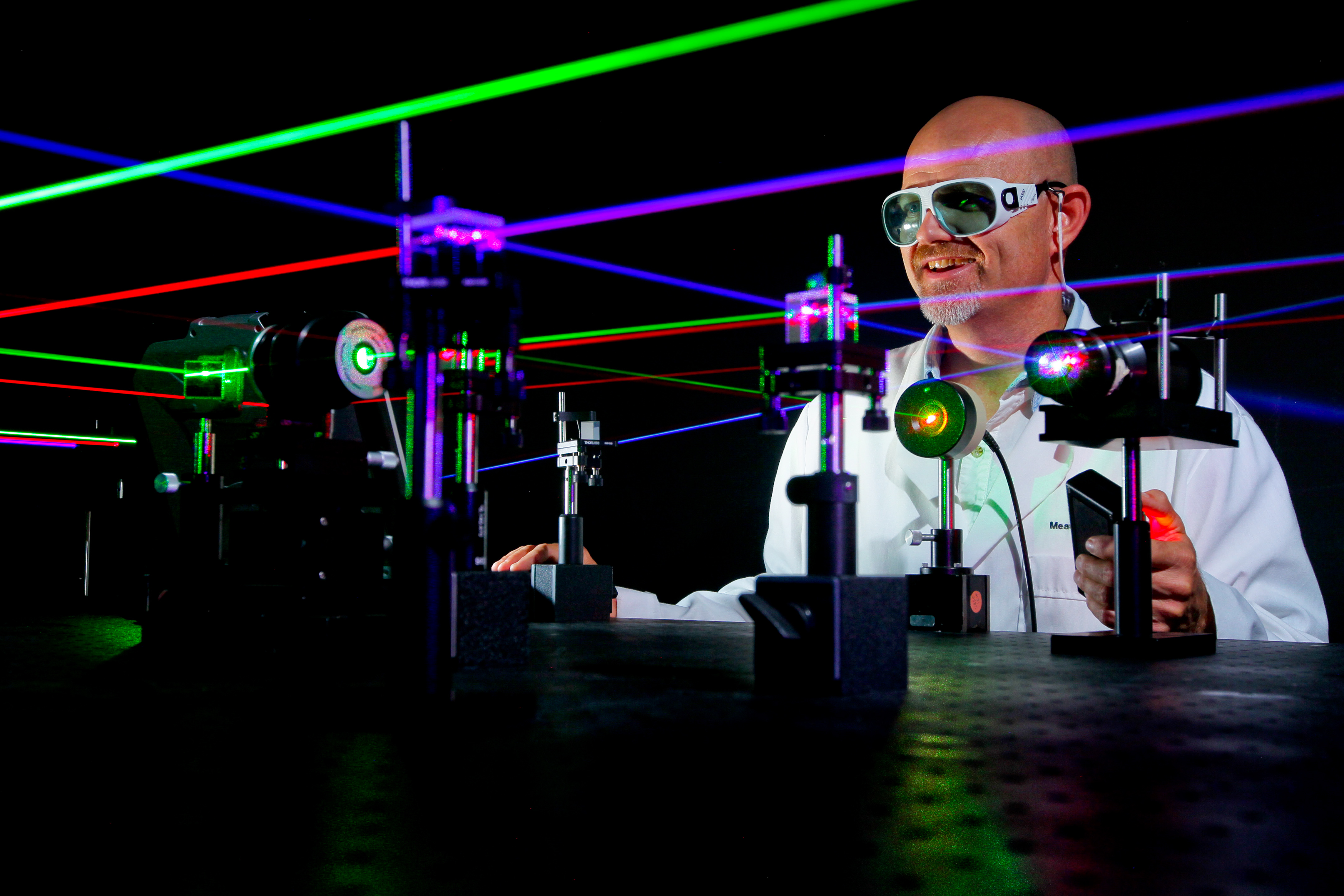
NATIONAL HARBOR, Md. – Along with using lasers to fry an adversary’s swarming drones, a team of U.S. Navy engineers is evaluating whether directed energy can also be an effective power supply for charging autonomous unmanned surface and air vehicles.
A capital ship generates a tremendous amount of energy for propulsion, ships systems, radars and electronic warfare equipment, Corey Bergsrud, a project integrator for Office of the Assistant Secretary of Defense for Operational Energy, said during the Navy League’s annual Sea Air Space expo.
The Navy is exploring using the electricity already generated through a ship’s operations to power directed energy weapons, but the Navy will likely use these weapons sparingly, Bergsrud said. His team is studying other uses for this generated power.
“You have a lot of potential at these places,” Bergsrud said. “Most of the time you probably won’t be using that energy, so what do you do with it in the meantime? Perhaps we can use that energy to reenergize our environments with autonomous systems.”
One idea is to create fast boats outfitted with charging pads that can meet autonomous vessels at sea and reenergize them with little human interaction. Or the directed energy system on a capital ship could double as a transmitter to reenergize autonomous systems at sea or in the air. Long-term, Bergsrud said, satellites could even be developed to shoot directed energy beams down to Earth to power forward operating bases.
“These are just examples; again, everyone has to use their imagination,” Bergsrud said.
The energy transfer technology already exists. Since the 1960s, Bergsrud said, engineers have experimented with the idea of powering equipment through directed energy – which involves shooting a power beam to power a vehicle. Meanwhile, inductive magnetic charging already exists and is frequently used to charge electric toothbrushes, cell phones and electric cars.
The Navy already generates more than enough power. The Ford-class aircraft carriers are being built with three times the electrical-generation capacity of any previous carrier, which already produced enough energy to power a small city. The Ford-class is designed to be able to power emerging technologies developed during its expected 50-year service life, according to a Navy post in its All Hands magazine.
The question Bergsrud is seeking to answer now, he said, is, “if you have distributed energy nodes, high powered, can you use that high power to reenergize unmanned platforms, for instance, to maintain your persistence?”
The Navy needs to understand such details as how much energy can be generated and delivered to a location where it makes sense to recharge a system. Get too close and a directed energy weapon will fry the system it’s trying charge. Stand too far away and the beam will dissipate too much to offer much of a charge.
Once his study is complete later this year, Bergsrud said it could take another two to four years to develop requirements and start real-world testing.
“The utility of wireless power offers to unleash strategical and tactical advantages,” Bergsrud said.





